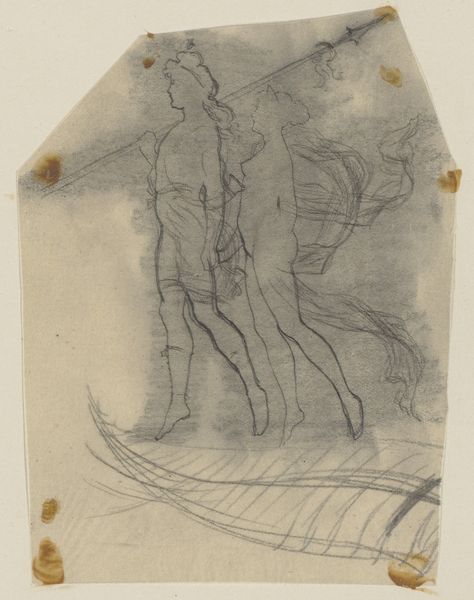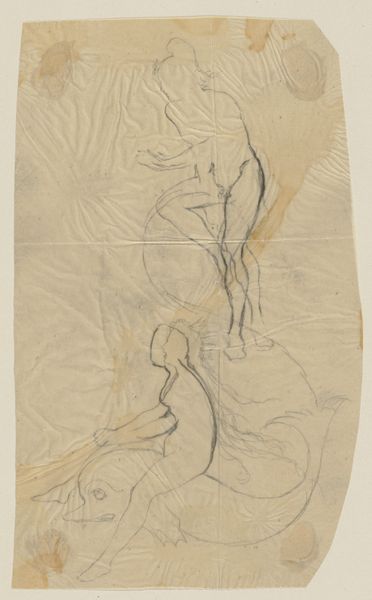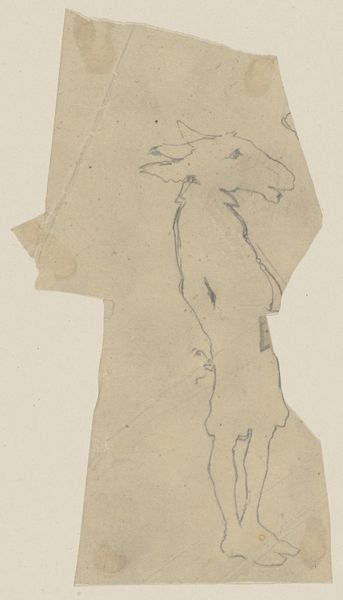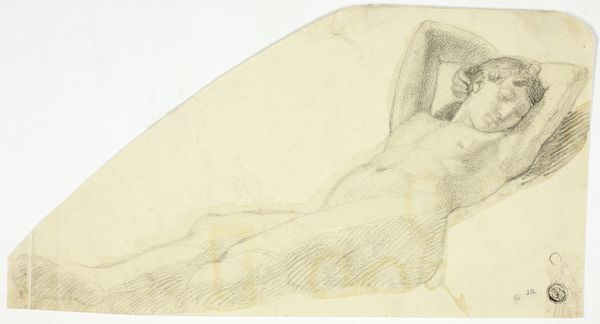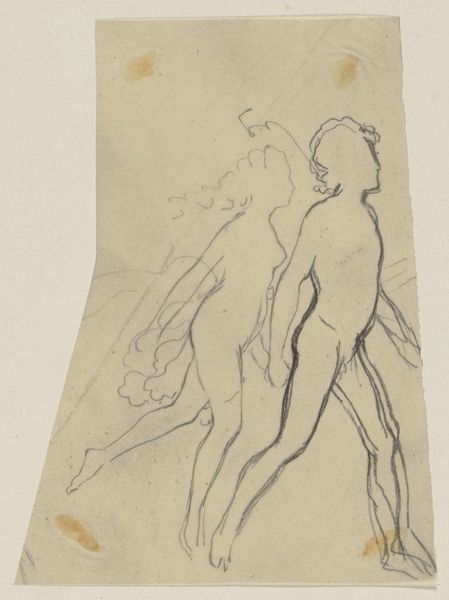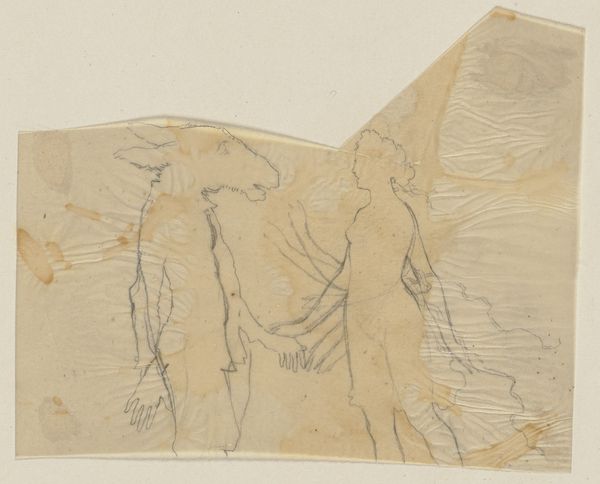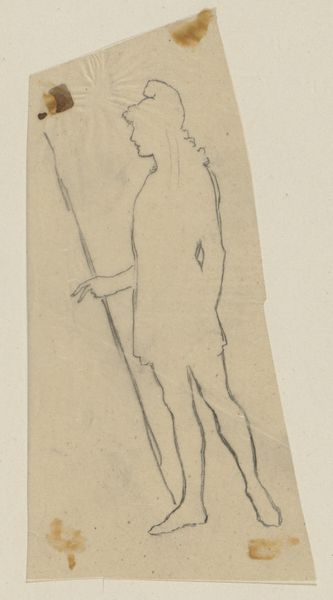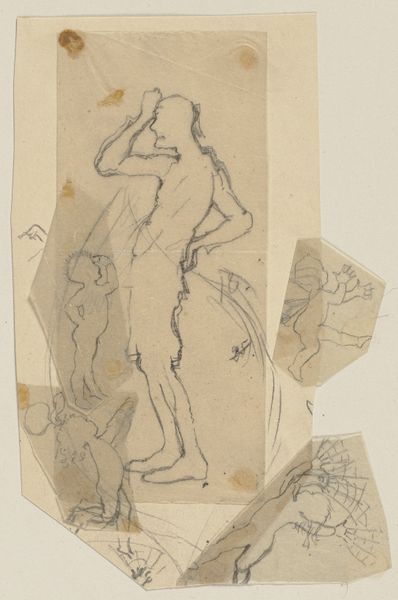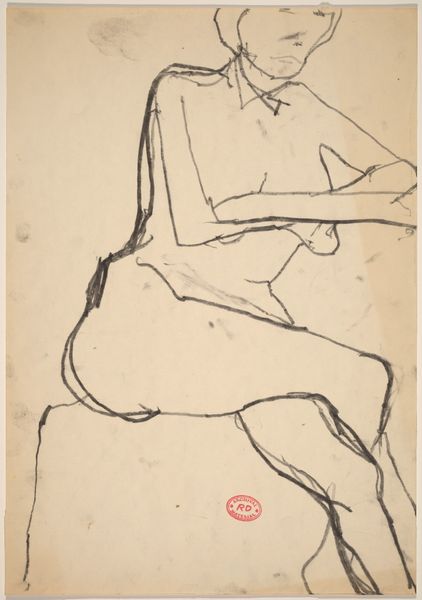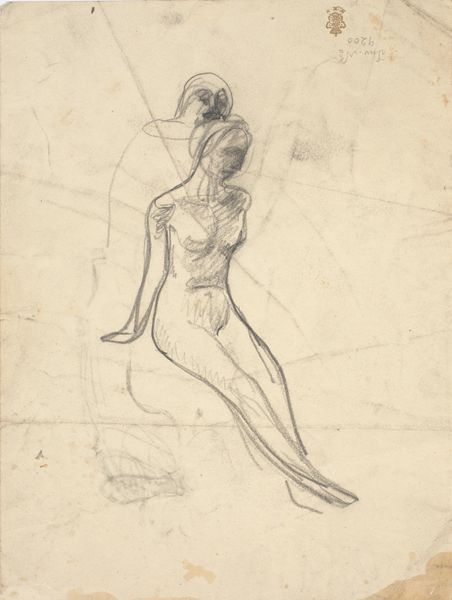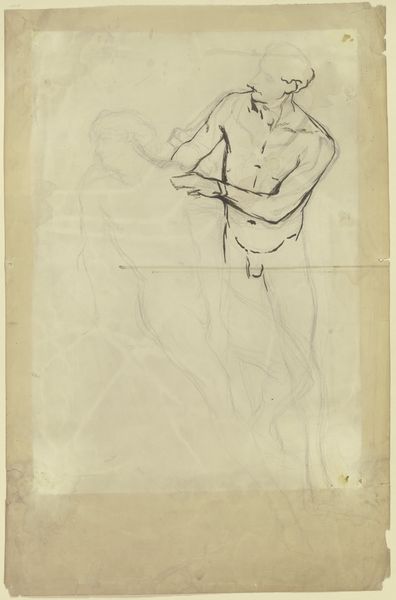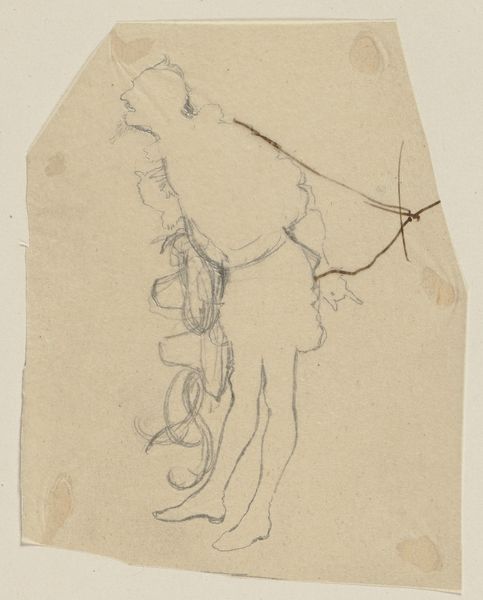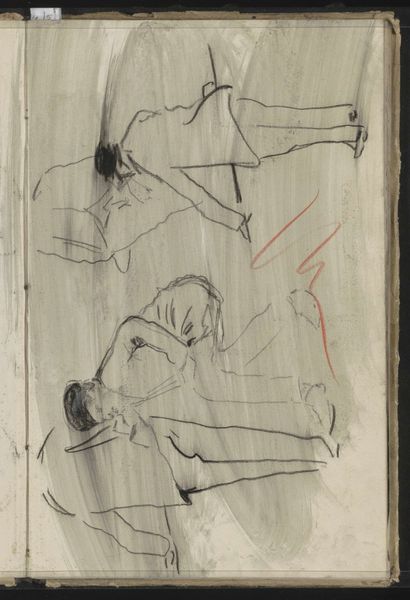
Copyright: Public Domain
Editor: This is Paul Konewka's "Schlafender Lysander nach links," a pencil drawing from around 1867 or 1868. There's a raw energy in the sketchiness, an intimacy even in this classical subject matter. What stands out to you in this piece? Curator: It’s fascinating to consider Konewka’s "Sleeping Lysander" within the context of 19th-century German art, particularly given the rising tides of nationalism and romanticism. The male nude was, of course, a classical trope, but how do we see the body here? Is it a celebration of idealized form, or something more… vulnerable? Does it reflect the anxieties of the time, perhaps the tension between individual agency and societal expectations? Editor: I hadn't considered the vulnerability aspect. It’s so easy to get caught up in the idealized form and miss those subtle tensions. Curator: Exactly! Consider Lysander, a Spartan naval commander known for his victories, depicted here in repose. It subverts expectations. And notice the medium – a simple pencil sketch. Is this a conscious choice to democratize art, or perhaps a statement about the accessibility of classical ideals versus their often-exclusive, power-laden, realities? How does this informal technique relate to institutional critique? Editor: That’s a compelling thought. The rawness of the sketch could be seen as a way of dismantling the grand narratives that were prevalent then. Curator: Precisely. And let's not forget the fragmented edges of the paper itself. What story does this partial view tell us about completeness, authority, and the narratives we construct around historical figures? Editor: This makes me realize there’s much more to unpack here than just a simple sketch of a sleeping figure. Thank you! Curator: My pleasure. It’s about recognizing how even seemingly straightforward works can be potent sites of cultural dialogue.
Comments
No comments
Be the first to comment and join the conversation on the ultimate creative platform.
